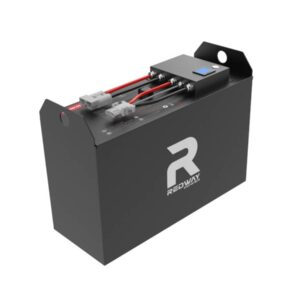How to keep a lithium battery last longer?
To maximize lithium battery lifespan, maintain partial discharge cycles (20–80% SoC), avoid extreme temperatures (15–25°C optimal), and prevent full discharges below 10%. Use chargers with voltage regulation (±1% tolerance) and store batteries at 40–60% charge. Regularly calibrate the BMS to ensure cell balancing. Cycle life improves by 200–300% compared to full-depth discharges.
How to Maximize Forklift Battery Lifespan
What charging practices optimize lithium battery longevity?

Partial charging (20–80% SoC) reduces cathode stress versus full cycles. Li-ion cells degrade faster above 4.1V/cell; quality BMS systems cap voltage at 4.05V to slow capacity fade. Pro Tip: Set charger timers to stop at 80% for daily use—saves 40% cycle wear versus 100% charging. For example, smartphones using adaptive charging (like Apple’s Optimized Battery Charging) achieve 1,200+ cycles before hitting 80% capacity.
| Charging Strategy | Cycle Life | Capacity Retention at 500 Cycles |
|---|---|---|
| 100% Full Charge | 500–700 | 75–80% |
| 80% Partial Charge | 1,000–1,200 | 88–92% |
How does temperature affect lithium battery degradation?
Heat accelerates parasitic reactions (SEI growth) while cold increases internal resistance. Batteries lose 20–30% capacity/year if stored at 40°C versus 5% at 25°C. Pro Tip: Avoid charging below 0°C—lithium plating can puncture separators, causing shorts. For example, EVs precondition batteries to 15–20°C before DC fast charging.
What storage protocols preserve lithium battery health?
Store at 40–60% SoC in 10–25°C environments to minimize calendar aging. Self-discharge (1–2%/month) drains cells below 2.5V if ignored, triggering protection circuits. Pro Tip: Check stored batteries every 3 months—recharge to 50% if below 30%. For instance, drone batteries stored at 50% charge retain 95% capacity after 6 months versus 70% when fully charged.
Key Considerations for Heavy-Duty Forklift Batteries
Why is BMS calibration critical for lifespan?
Battery Management Systems (BMS) prevent cell voltage drift—a 0.1V imbalance reduces pack capacity by 15%. Active balancing circuits (1–2mA current) equalize cells during charging. Pro Tip: Perform full discharge-recharge cycles every 3 months to recalibrate SoC accuracy. For example, power tools with uncalibrated BMS often shut down prematurely despite having residual charge.
| BMS Type | Balancing Current | Cell Voltage Variance |
|---|---|---|
| Passive | 50mA | ±0.05V |
| Active | 500mA | ±0.01V |
How do usage patterns impact battery lifespan?
High discharge rates (above 1C) generate heat and mechanical stress. Limiting discharge depth to 80% (e.g., 20–80% cycles) triples cycle life versus 100% DoD. Pro Tip: For EVs, use “Eco Mode” to cap acceleration power—reduces peak current by 30%. For instance, e-bike batteries delivering 20A continuous vs 30A peak degrade 50% slower.
Battery Expert Insight
FAQs
Does frequent partial charging harm batteries?
No—modern lithium batteries thrive on partial cycles. Unlike NiMH, they don’t develop “memory effect.” Frequent 20–80% cycles cause less stress than full discharges.
Can I store lithium batteries at full charge?
Avoid it—storage at 100% SoC increases internal pressure, degrading the electrolyte 3× faster. Always discharge to 40–60% before long-term storage.
